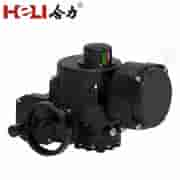lithium battery electrical installation: a comprehensive guide
Release time:2024-12-16 01:53:29
Lithium batteries have revolutionized the way we store and use energy, becoming the preferred choice for a wide range of applications from consumer electronics to electric vehicles and renewable energy systems. As the demand for lithium battery technology continues to grow, so does the need for proper electrical installation to ensure safety, efficiency, and longevity of the systems. This article provides a detailed overview of lithium battery electrical installation, highlighting essential considerations and best practices.

Understanding Lithium Batteries

Lithium batteries operate by moving lithium ions between the anode and cathode through an electrolyte. They offer several advantages over traditional lead-acid batteries, including higher energy density, lighter weight, longer lifespan, and lower self-discharge rates. However, these benefits also come with specific installation requirements that must be carefully managed to avoid risks such as thermal runaway, short circuits, and battery failure. Key Considerations for Installation




